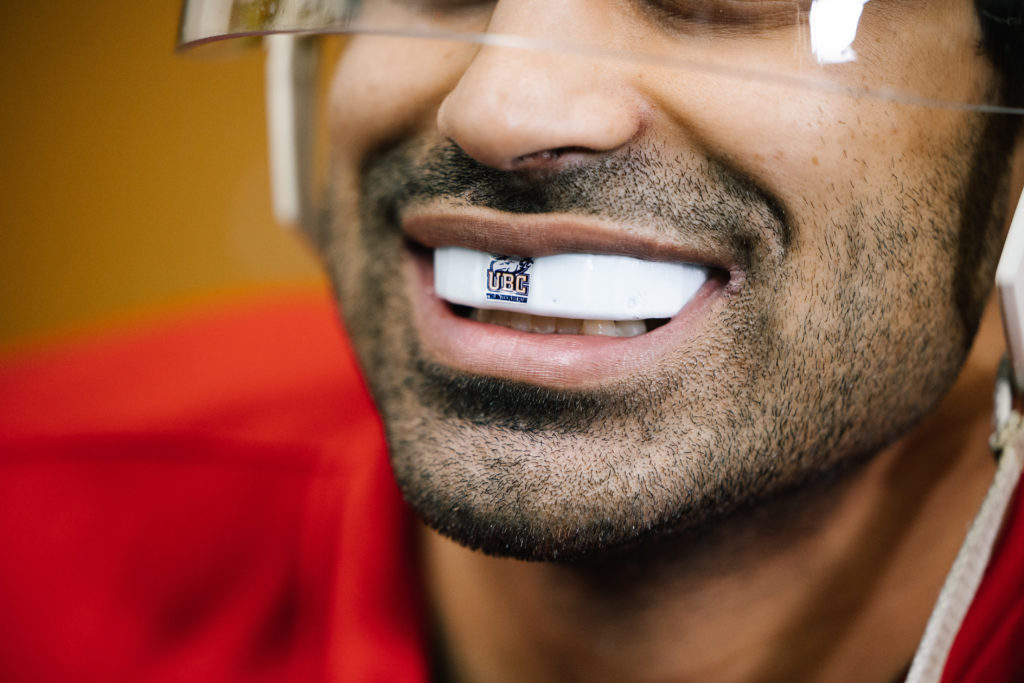
A high-tech mouthguard worn by UBC Thunderbird hockey players will record every big hit of the upcoming playoffs to capture data for UBC researchers who study concussions. The study is led by Dr. Lyndia Wu, an expert in brain injury biomechanics at UBC’s Faculty of Applied Science.
“We started a five-year collaborative study with the UBC Thunderbirds men’s and women’s hockey teams with two main research goals: to understand how the brain changes after a concussion in sports and how repeated impacts may lead to longer term brain changes,” says Dr. Wu. She says the mouthguard is an ideal tool to study these head impacts as it sits closer to the skull than other types of sensors like helmet sensors.
The study started recruiting participants last year after receiving a five-year grant from the Canadian Institutes of Health Research, working closely with Thunderbirds hockey head coaches Graham Thomas (women’s team) and Sven Butenschön (men’s team).
“Concussions are a part of the game of hockey, because it’s such a fast sport,” says Thomas. “There’s just so much that can happen. We’re doing this [research] for the bigger picture and for the benefit of those who come after us.”
Butenschön says that experiencing a concussion can be more challenging for varsity players than for professional players. “Let’s say you’re playing junior hockey or professional hockey, you get a check to the head, you can isolate, you can relax and recover. Here at UBC, these players have midterms and exams, and they can’t miss anything because they’ll fall behind quickly with such a demanding academic load.”
Please read the full story at the Applied Science news website.
Through Strategy 9: Knowledge Exchange, UBC is committed to building expertise in knowledge exchange to help researchers across disciplines find and establish connections with community, corporate and international partners.